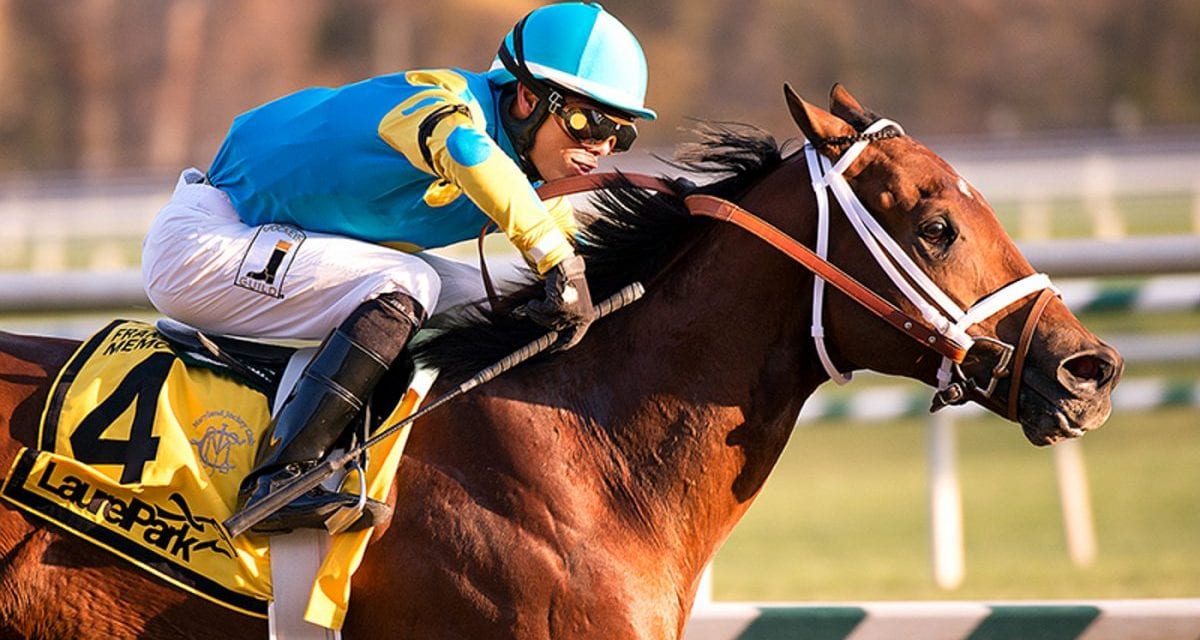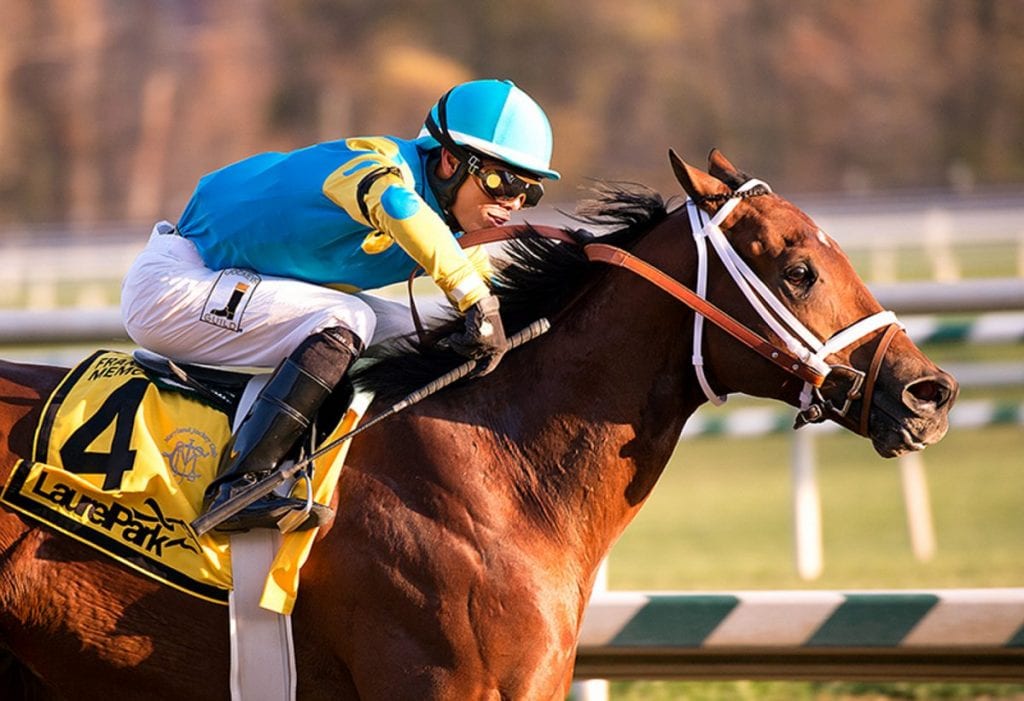by Frank Vespe
D. Wayne Lukas won a race.
So did Steve Asmussen, Michael Matz, and David Jacobson.
Todd Pletcher didn’t, and neither did Chad Brown — though each sent out a well-regarded runner to finish in the money.
Saturday’s Laurel Park entry box read like a who’s who of big-time trainers. Grade 1 winner Dads Caps headlined the $350,000 Frank J. De Francis Memorial Dash, while Grade 3 winner Cinco Charlie got the money in the James F. Lewis, III Stakes. Breeders’ Cup Sprint runner Mico Margarita — another Asmussen trainee — was the third-favorite in the De Francis.
Three of the stakes went off with favorites of at least 2.20-1; four had fields of 10 or more runners.
For their part, bettors responded enthusiastically, pumping more than $3.2 million through the windows on the nine-race card. That was nearly 27 percent more wagering than on last year”s De Francis card.
All of which suggests that the Maryland Jockey Club’s strategy of grouping its stakes into a series of big days — rather than spreading them out over the year — is starting to take root.
That hasn’t always been the case.
Back in April, asked whether the move was impacting handle, MJC president Tom Chuckas counseled patience. “One of the problems in racing is that if it doesn’t show a monumental success immediately out of the gate, there’s no endurance here,” he said then. “There’s no, ‘Let’s stick with this and really make it work.'”
That patience appears to be paying off.
In a crowded winner’s circle following the De Francis, Joe De Francis, the big race’s architect and son of Frank J., endorsed the “big day” strategy.
“It’s really important, I think, to create reasons for people to get in their cars and come to the track,” he said. “When you put together a race card like today and create these really big days, like they did on Belmont day, for example, I think that’s very important.”
He appears to be right.
As wagering has increasingly moved away from the track — first, to off-track facilities and more recently to online betting — the day-to-day racing product is becoming an increasingly tough sell. That problem’s exacerbated by racing’s diminishing presence in the public’s mind.
Yet the big days — the Kentucky Derby, for example, or, closer to home, the Preakness, or even the Pennsylvania Derby — remain robust.
You probably can’t create a second Preakness — but turning the stakes schedule into a series of “micro-Preakness” days might be the best alternative.
Make no mistake, though; there’s plenty of work left to do. Wagering on the ’06 De Francis card, for example, easily exceeded $5 million. And, at Aqueduct, which ran the Grade 3 Red Smith but had an otherwise entirely non-descript card with a bunch of state-bred races and a handful of claiming events, wagering topped $8 million.
There’s a long way to go to get to those levels.
Still, a journey of a thousand miles, etc.
Back in April, Chuckas observed, “The point is, the decline didn’t happen in a day, and the resurrection isn’t going to happen in a day. I’m happy with the progress we’re making.”
Happier now, we’d wager.













